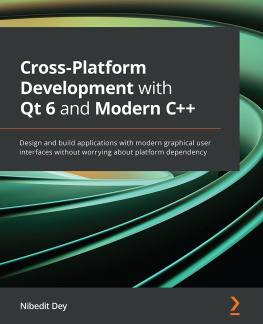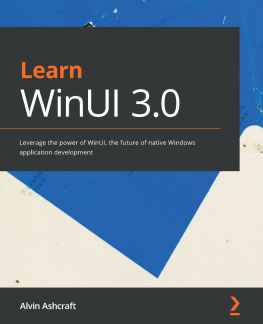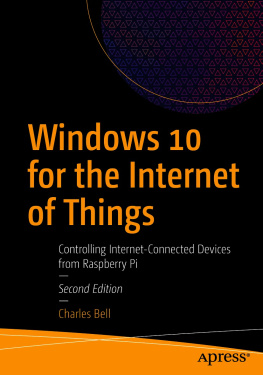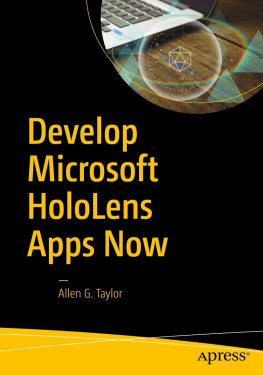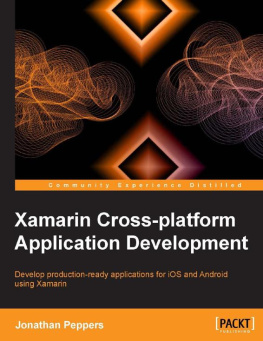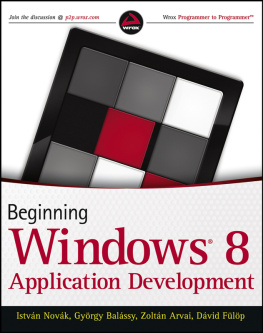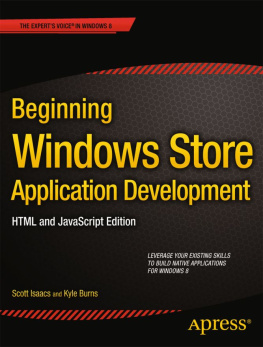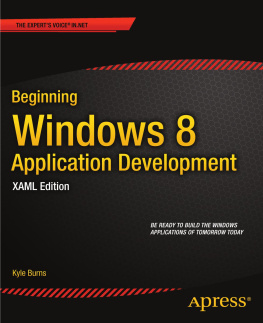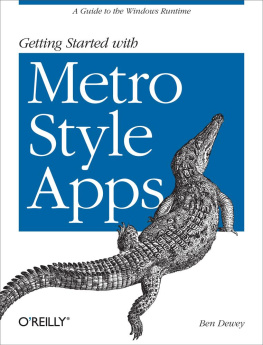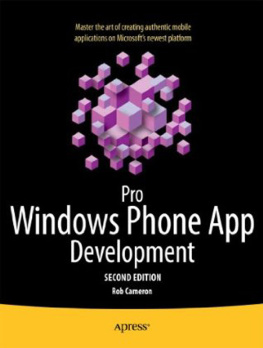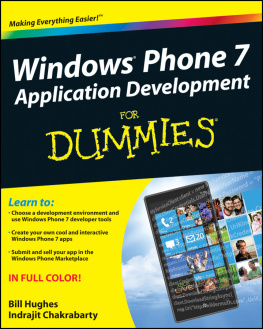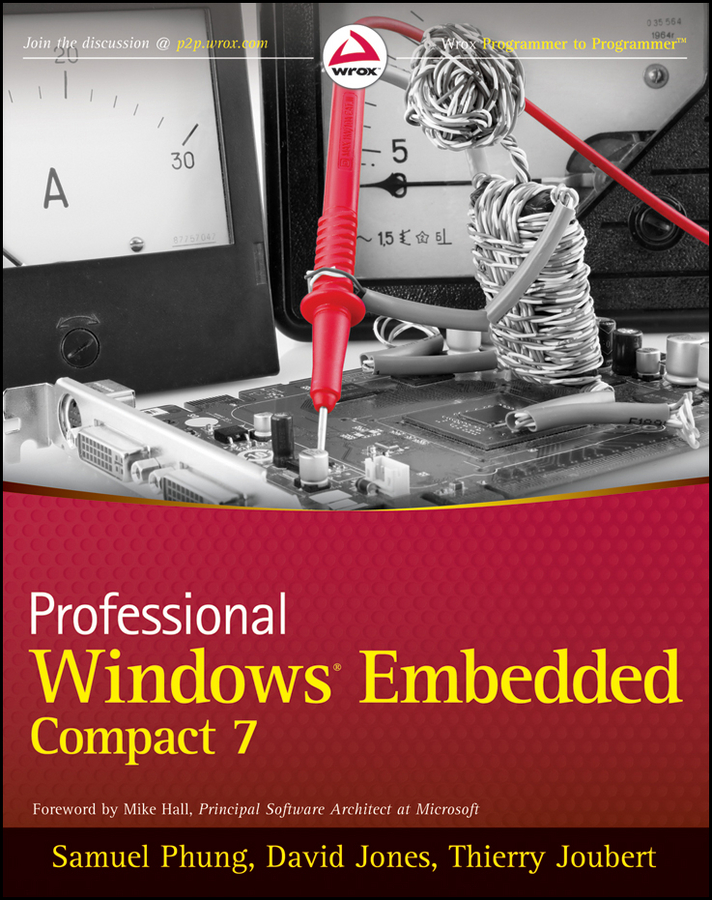CONTENTS

Professional Windows Embedded Compact 7
Published by
John Wiley & Sons, Inc.
10475 Crosspoint Boulevard
Indianapolis, IN 46256
www.wiley.com
Copyright 2011 by John Wiley & Sons, Inc., Indianapolis, Indiana
Published simultaneously in Canada
ISBN: 978-1-118-05046-0
ISBN: 978-1-118-16750-2
ISBN: 978-1-118-16748-9
ISBN: 978-1-118-16747-2
No part of this publication may be reproduced, stored in a retrieval system or transmitted in any form or by any means, electronic, mechanical, photocopying, recording, scanning or otherwise, except as permitted under Sections 107 or 108 of the 1976 United States Copyright Act, without either the prior written permission of the Publisher, or authorization through payment of the appropriate per-copy fee to the Copyright Clearance Center, 222 Rosewood Drive, Danvers, MA 01923, (978) 750-8400, fax (978) 646-8600. Requests to the Publisher for permission should be addressed to the Permissions Department, John Wiley & Sons, Inc., 111 River Street, Hoboken, NJ 07030, (201) 748-6011, fax (201) 748-6008, or online at http://www.wiley.com/go/permissions .
Limit of Liability/Disclaimer of Warranty: The publisher and the author make no representations or warranties with respect to the accuracy or completeness of the contents of this work and specifically disclaim all warranties, including without limitation warranties of fitness for a particular purpose. No warranty may be created or extended by sales or promotional materials. The advice and strategies contained herein may not be suitable for every situation. This work is sold with the understanding that the publisher is not engaged in rendering legal, accounting, or other professional services. If professional assistance is required, the services of a competent professional person should be sought. Neither the publisher nor the author shall be liable for damages arising herefrom. The fact that an organization or Web site is referred to in this work as a citation and/or a potential source of further information does not mean that the author or the publisher endorses the information the organization or Web site may provide or recommendations it may make. Further, readers should be aware that Internet Web sites listed in this work may have changed or disappeared between when this work was written and when it is read.
For general information on our other products and services please contact our Customer Care Department within the United States at (877) 762-2974, outside the United States at (317) 572-3993 or fax (317) 572-4002.
Wiley also publishes its books in a variety of electronic formats and by print-on-demand. Not all content that is available in standard print versions of this book may appear or be packaged in all book formats. If you have purchased a version of this book that did not include media that is referenced by or accompanies a standard print version, you may request this media by visiting http://booksupport.wiley.com . For more information about Wiley products, visit us at www.wiley.com .
Library of Congress Control Number: 2011934627
Trademarks: Wiley, the Wiley logo, Wrox, the Wrox logo, Wrox Programmer to Programmer, and related trade dress are trademarks or registered trademarks of John Wiley & Sons, Inc. and/or its affiliates, in the United States and other countries, and may not be used without written permission. Windows is a registered trademark of Microsoft Corporation in the United States and/or other countries. All other trademarks are the property of their respective owners. John Wiley & Sons, Inc. is not associated with any product or vendor mentioned in this book.
ABOUT THE AUTHORS
SAMUEL PHUNG has worked in the technology field for more than 20 years. In the early 1990s, he led a financial database software development team, developing software for the banking industry. Later he led a software team developing Windows-Based telephony applications for a venture capital-funded startup. He started to work in the embedded computing field in the late 1990s and engaged with the Windows Embedded product team, starting with Windows NT 4.0 Embedded. He has been working with Windows Embedded Compact since version 2.12 was introduced.
As the VP of sales and marketing for ICOP Technology, a hardware manufacturer headquartered in Taiwan with a branch office in the United States and a manufacturing facility in China, Samuel is responsible for strategic business development for ICOP in the North America region. In 2003, he created the Vortex86 branding and started an initiative focused on developing business around Windows Embedded technology for ICOP.
In 2009, he wrote Professional Microsoft Windows Embedded CE 6.0.
Samuel enjoys working with technology, actively engages with the academic community, and received the Windows Embedded MVP recognition from Microsoft since 2005. As part of his involvement in the academic community, Samuel actively works with university teaching professionals in the United States, China, and Taiwan and other regions to adopt Windows Embedded technology as part of their teaching curriculum.
As part of his Windows Embedded community activities, Samuel maintains a personal website: www.embeddedpc.net , to provide information resources related to Windows Embedded. In 2010, he initiated the Embedded101 Windows Embedded community portal, www.embedded101.com .

DAVID JONES has a Master of Engineering degree from RMIT University and BSc(Hon) from Melbourne University. David has been actively engaged in Embedded Systems and Computing Technologies for more than twenty years. From 1990 to 2006, he was a University Lecturer in Computer Engineering at RMIT University in Melbourne, Australia. After leaving his university teaching role in late 2006, he joined the Victorian Partnership for Advanced Computing ( www.vpac.org ) to provide embedded system training, consulting, and development services with a focus on modern Embedded-system technologies. VPAC is a non-profit research agency established in 2000 by a consortium of Victorian Universities to provide advanced computing expertise, training, and support to academia, industry, and government.
While teaching at RMIT, he mentored student teams participating in the Windows Embedded Student Challenge competition sponsored by Microsoft. One of the student teams he mentored won first place during the 2005 worldwide final competition. David actively engages in the Windows Embedded community. He has delivered presentations on behalf of Microsoft in the Asia Pacific region, covering Windows Embedded and .NET technologies. In 2010, he initiated the effort to develop a Device-Driver Wizard and a Component Wizard, both for Windows Embedded CE 6.0 and Windows Embedded Compact 7. He released community versions for both. David is a certified Windows Embedded trainer.

THIERRY JOUBERT is the CTO and co-founder for THEORIS, a technology company in France that provides project management, software consulting, outsourcing, and training services with focus on modern embedded technology. He graduated from the Ecole Centrale de Nantes in France with an engineering degree in computer science. Thierry has been actively engaged in Embedded-system design and real-time application development for over 25 years.


